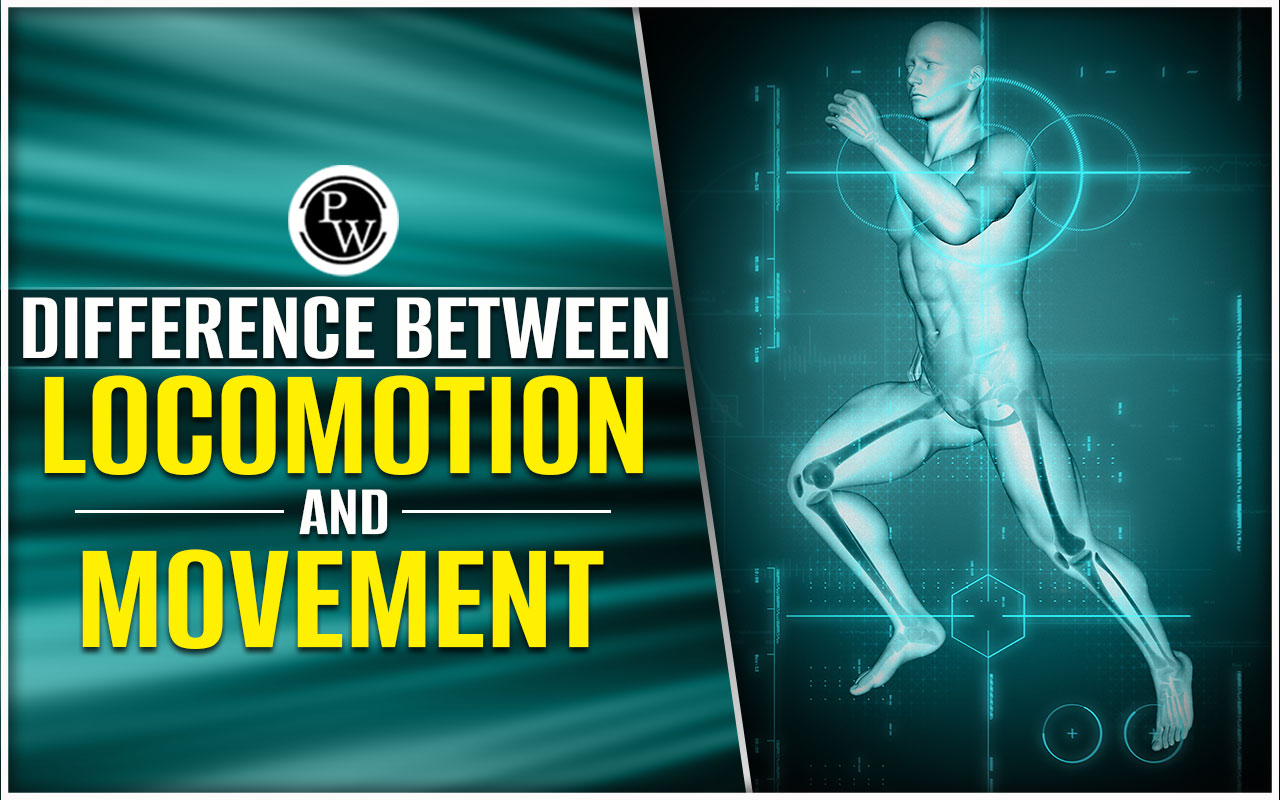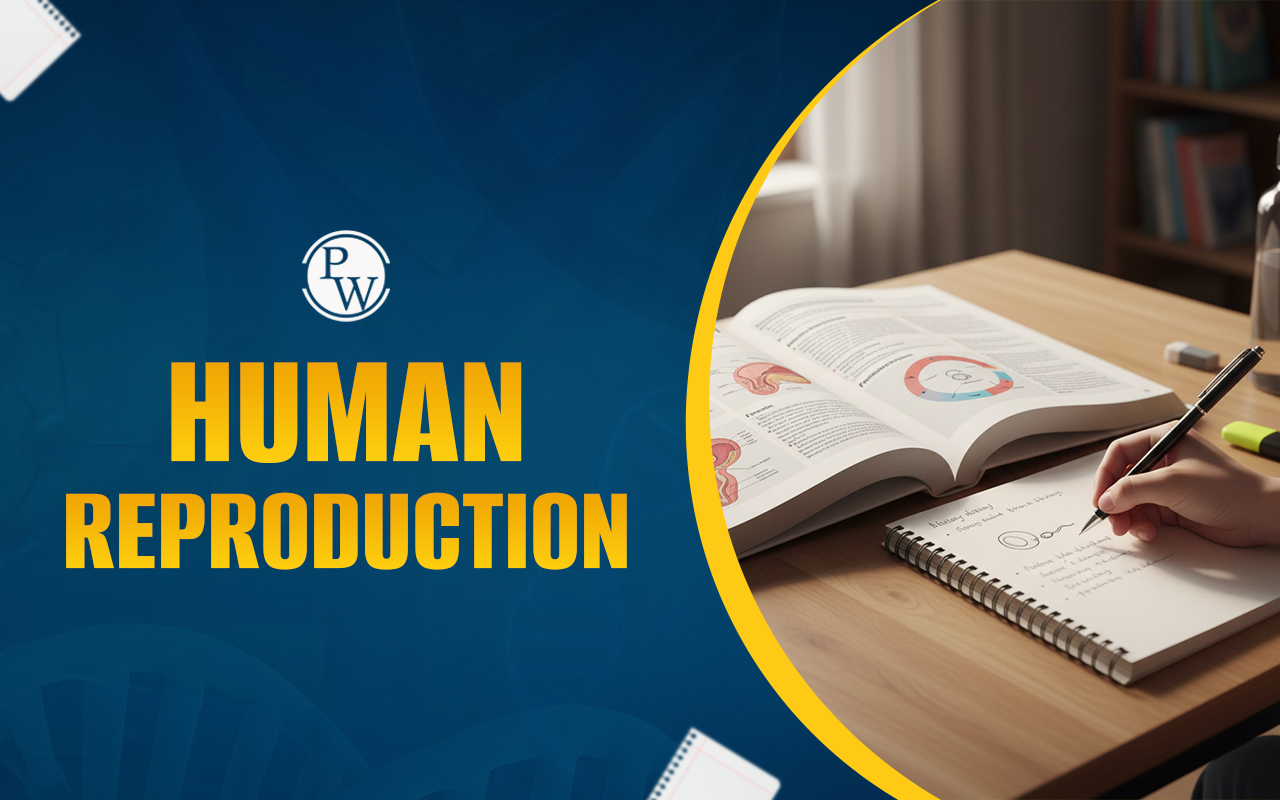

Difference between locomotion and movement: Movement is a change in position from rest to motion or from motion to rest. Movement can be voluntary or involuntary. Movement allows an organism to execute various critical duties, such as pumping blood to different body regions. The human body's motions get smoother with age. Locomotion can be described as the movement of a living thing from one location to another.
The action of appendages like wings, limbs, and flagella accomplishes the locomotion. In particular beings, such as fish, whales, and sharks, locomotion is carried out by a succession of wave-like muscular contractions. Read the article for complete details about the difference between locomotion and movement.| NEET Biology Syllabus | NEET Biology Diagrams |
| NEET Biology MCQ | NEET Biology Chapter wise Weightage |
| NEET Biology Notes | NEET Previous Year Question papers |
Difference between locomotion and movement Overview
Locomotion is defined as an organism's movement from one location to another. Humans and other organisms use numerous bodily components, such as legs and feet, fins and tails, wings, etc., to travel from one location to another. On the other hand, humans use vehicles, boats, and aeroplanes to get from one location to another. Movement includes all types of motion. It can happen at any level, whether atomic, cellular, or inside an organ. Additionally, movement might be either voluntary or involuntary. Clapping your hands represents intentional action, whereas breathing represents involuntary activity. Locomotion is an example of movement, according to the definition.
Difference Between Locomotion and Movement
Movement and locomotion are two terms used in the study of motion. These terms are among the most essential characteristics of all living things. Except for plants, all living species migrate from one location to another for various reasons, including the quest for food, shelter, and protection from predators. The difference between locomotion and movement is given in the table below.
| Difference Between Locomotion and Movement | ||
|---|---|---|
| Basis | Locomotion | Movement |
| Definition | The movement of the entire body from one location to another in a precise direction is called locomotion. | The motion that occurs with or without moving away from an organism's original position is called movement. |
| Original Position | It might happen when the organism moves away from its original spot. | It can happen with or without the organism moving away from its original place. |
| Level | It takes place at the organismal level. | It takes place on a biological level. |
| Voluntariness | Locomotion is usually voluntary. | There are two types of movement: voluntary and involuntary. |
| Energy Requirement | It does not always necessitate the use of energy. | It necessitates the use of energy. |
| Types | Aerial, arboreal, aquatic, cursorial, fossorial, and saltatorial are the types of locomotion. | Amoeboid, ciliary, and muscular are the types of movement. |
| Examples | Walking, running, flying, swimming, and jumping are examples of locomotion. | Movement of the limbs, tongue, and jaw are examples of movement. |
| Basis | It is based on the movement of the entire body. | It is based on motion with or without changing the organism's original position. |
Locomotion
Locomotion is the ability of an organism to move from one location to another. Creating motion and propelling the body through its surroundings necessitates the coordinated activity of several bodily components. Humans and animals use locomotion to move around their different environments, which includes walking, crawling, running, flying, and swimming. Transportation is also an excellent mode of transportation for getting from one location to another. Organisms employ bodily components such as limbs and wings to avoid adverse weather, escape predators, etc. The animal kingdom has numerous forms of locomotion:
- Walking : It is a locomotion that may be observed in terrestrial animals and humans. It includes moving one or more limbs while keeping contact with the ground.
- Running : It is a faster movement mode than walking, including periods when both feet are off the ground.
- Crawling : During the early phases of development, snakes and mammals drag their bodies over the ground to travel from one location to another.
- Flying : It is a movement away from the ground in the air that can be seen in birds, insects, bats, and other animals.
Movement
Movement is a broader phrase that refers to any change in the position or posture of an organism or its physical components. It includes a more extensive variety of activities outside the movement. Locomotion is one of its primary examples. Internal movement includes muscular contraction, breathing, and food digestion, whereas exterior movements include bending, stretching, flexing, or pointing. In the human body, cells display three types of motion, which are as follows:
- Amoeboid movement is a cellular movement that occurs in eukaryotic cells such as amoebae and white blood cells. These cells change their form and travel for nourishment, chemical signals, or to avoid dangerous chemicals.
- Ciliary movement is the coordinated and rhythmic structure known as cilia. It is detected in ciliated eukaryotic cells. Ciliary movement is critical for sustaining good respiratory and physiological functioning in species that have cilia.
Physics Wallah's NEET Online Coaching offers the best exam preparation courses at an affordable cost, with the finest faculty and live online coaching.
Difference Between locomotion and movement FAQs
What is the fundamental difference between locomotion and movement?
What are the three distinct types of locomotion?
Why are both movement and locomotion deemed essential for living organisms?
What mechanisms does a cockroach employ for its locomotion?
What is the distinctive movement pattern of earthworms?












